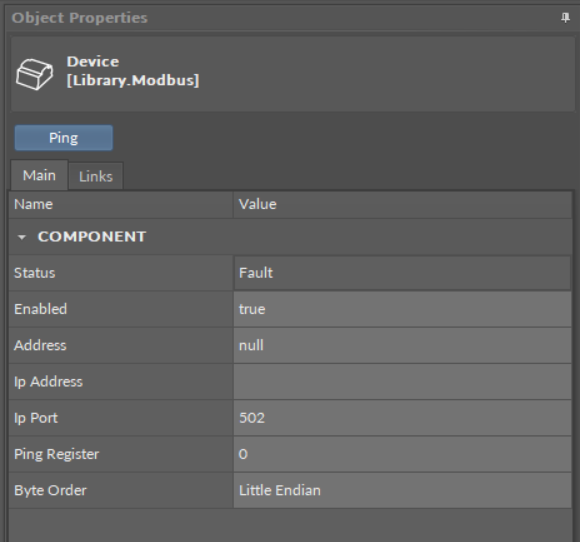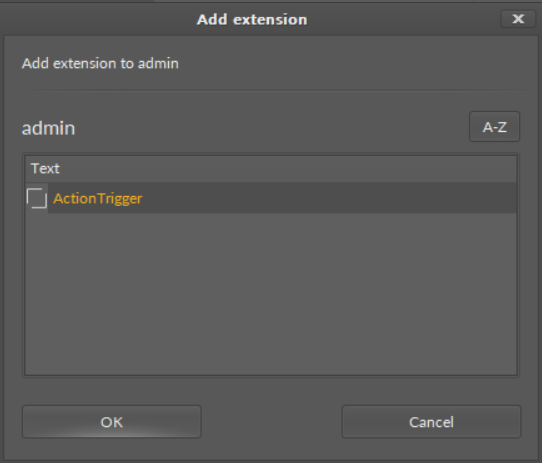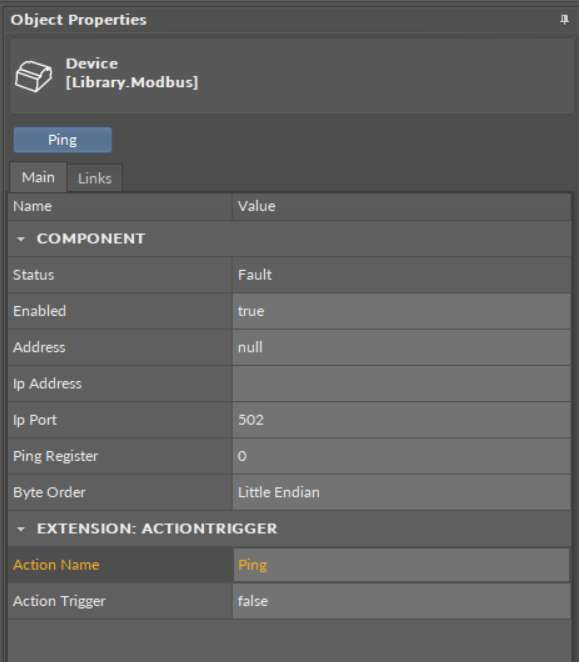The Device component is a component to configure data for communication with a server device in the Modbus network. The RAC18-IP controller acts as a client device in the Modbus network, and the Device component allows to add remote devices connected on the Ethernet or serial port, set their unique addresses and ping registers. The ping register number defines the remote device register, which answers the master request–if there is no response from the slave device, the Device component goes into the Down status.
Warning!
For the Device component to work properly, it is important that it should be added after the Network component was enabled. In case the network gets disabled during operation, the controller has to be restarted.

The Device component
The Device component has the following slots:
-
Status: indicates the current status of the component; if the component works properly, its status is OK. The component becomes Disabled, once the Enabled slot is in false. The component's status is Fault, once the Address slot is null. If there is no response from the addressed device, the component goes into the Down status.Available information: Disabled, Fault, Down, OK.
-
Enabled: change of the slot's value enables or disables the component.Available settings: true (enabled), false (disabled).
Note: If the Enabled slot is in false (meaning the component is disabled), the Status slot becomes Disabled.
-
Address: allows to set the unique address of the remote device in the Modbus network;
-
Ip Address: allows to set an IP address of the device (relevant only if the device communicates using IP interface in the network);
-
Ip Port: allows to set an IP port of the device (relevant only if the device communicates using IP interface in the network);
-
Ping Register: allows to set the number of the remote device's register (in decimal format), which will provide answers for the master device's Modbus requests;
-
Byte Order: allows to set a register endianness for multiregister values from the remote device.
Worth to Notice
If the Network component is disabled, the Device component is disabled too.
The Device component has the following action:
-
Ping: sends a request to the remote device's register and waits for an answer (if there is no response from the requested device, the Device component goes into the Down status).

The Device component slots
ActionTrigger Extension
The ActionTrigger extension is designed to invoke any action that is available for the component. The extension triggers an action selected in the Action Name on the rising edge of the Action Trigger slot. If the action has parameters to set, the parameter is taken from a relevant slot automatically added to the extension (Analog Value/Binary Value/String Value).
It is possible to add more than one ActionTrigger extension to the component (for example, one for each action in the component).
The extension is added from the context menu of the component.

The ActionTrigger extension has the following slots:
-
Action Name: allows to select an action to invoke;
-
Action Trigger: triggers an action selected in the Action Name slot;
-
Action Analog Value/Action Binary Value/Action String Value: a slot added automatically to the extension if an action selected in the Action Name slot has any specific parameters to set (depending on the type of action and its parameters, the relevant type of value is matched).

The ActionTrigger extension in the Device component
